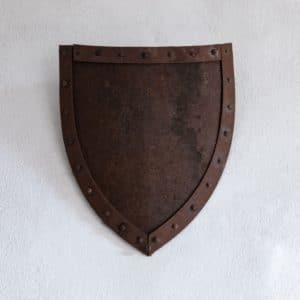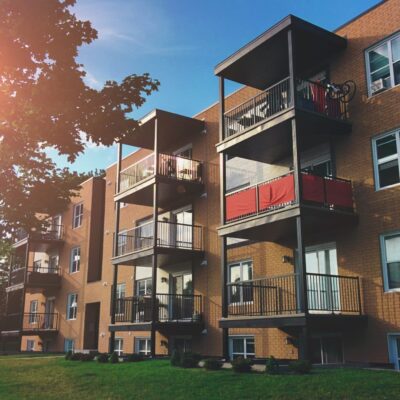Out of Bounds: Claims Outside the Standards of Practice
Last Updated November 9, 2023

 During any sporting event there are many focuses of our attention: the players, the ball, the referee. It is rare, however, to hear a fan say, “I just couldn’t take my eyes off the boundary line!” Yet, despite being the least exciting part, the borders of the playfield are secretly the MVPs of most games.
During any sporting event there are many focuses of our attention: the players, the ball, the referee. It is rare, however, to hear a fan say, “I just couldn’t take my eyes off the boundary line!” Yet, despite being the least exciting part, the borders of the playfield are secretly the MVPs of most games.
The boundaries give the vital structure that most sports need to be fair and controlled. If the ball or player gets pushed out of bounds, there might be some boos and sighs of frustration, but nothing beyond that. Conversely, if a player ran out of bounds and continued running down the field before jumping back into the field at the endzone, the crowd would rush the field in anger. Similarly, a home inspector who does not clearly define their boundaries in their pre-inspection agreement is likely to experience a metaphorical “rushing the field” from angry clients who did not understand the scope of the inspection.
We know home inspectors are human, but clients can have superhuman expectations of what an inspector “should” discover. To protect against unrealistic expectations and avoidable claims, home inspectors should reference their standard(s) of practice (SOPs) in their agreements. These standards are the boundaries that ensure that homeowners are getting proper inspections. They also protect inspectors from allegations for issues that are improbable to discover during a visual inspection.
By citing your operational standards in your contract, you allow your clients to know your exact processes and limitations.
Claims for “Out of Bounds” Issues Still Happen
Despite the popular (and wise) citation of standards of practice in most inspection agreements, allegations regarding issues that are outside of the SOP are still in the top ten reasons for claims against home inspectors. Here are common scenarios that lead to such claims.
Specialty Issues
There are many types of auxiliary inspections to offer alongside a typical home inspection (as defined in your SOP). If the standards you list in your pre-inspection agreement specifically exclude certain specialty inspections (ex.: pest, mold, water testing), then you should not be held accountable for issues arising from those areas. However, if you decide to offer these add-on services, always add an addendum to your inspection agreement. This addendum will add the standards for that specialty inspection since its services were originally excluded in your SOP.
A client accused one of our inspectors of negligence on his inspection. They specifically accused him of failing to discover high levels of Total Dissolved Solids (TDS) in well water. While most SOPs do not require an inspector to “inspect wells or springs” (InterNACHI SOP 3.2.IV.J), an inspector can always offer these specialty inspections as an add-on. The inspector had offered the client both a water test for the home, as well as a well-water test. However, they had only accepted the water test. Because the SOP excluded well testing, and since the client had opted out of the well test, the pre-inspection agreement protected our inspector, and the client dropped the claim.
Not Visible or Hidden
Another common claim arises when clients accuse inspectors of missing defects that would require a more intrusive inspection to find. Most SOPs define a home inspection as a visual—not invasive—examination of a home’s physical structure and systems. Because you can only inspect what you can see, you cannot inspect anything hidden from view. This includes things obstructed by furniture or personal belongings and things behind walls or below ground.
The ASHI SOP states that an inspector shall “inspect readily accessible, visually observable, installed systems and components listed in this Standard” (ASHI SOP 2.2.A). The SOP also states that “inspections performed using this Standard are not required to identify or report concealed conditions, latent defects, [and] consequential damages” (ASHI SOP 13.1.B.2.a) nor are inspectors required to determine “the condition of systems and components that are not readily accessible” (ASHI SOP 13.2.A.1).
Many clients who discover hidden or obscured defects feel like their inspectors did not examine their homes thoroughly. For example, one of our insured inspectors was accused of missing a gas and water leak they discovered underground. While the inspector had reported the malfunctioning water and gas meter, the claimant said he should have caught the leaks. We emphasized the visual nature of the inspection, as described in our insured’s SOP in his agreement. Since the leaks were underground, and thus not visible, the claimant did not pursue their claim further.
Dangerous Areas
Many attics, crawlspaces, and roofs are difficult to access without damaging property or hurting yourself. Always consider your own safety first. According to Todd Newman of AmeriSpec of Louisville in Kentucky, it’s important to not let your pride or experience get in the way of taking necessary precautions.
“Roof inspections can get dangerous when someone is skipping important safety steps or not paying attention to weather, rain, or their physical limitations,” said Newman in a previous article. “Sometimes, inspectors’ egos and their desire to prove to the world that they climbed a dangerous roof becomes [hazardous].”
Thankfully, if you decide not to inspect a potentially dangerous area, your standards of practice will back you up. An inspector is not required to “Enter or access any area that may, in the inspector’s opinion, be unsafe.” (InterNACHI SOP 2.2.III.C) or to “do anything that may, in the inspector’s opinion, be unsafe or dangerous to him/herself or others, or damage property, such as, but not limited to: walking on roof surfaces, climbing ladders, entering attic spaces, or negotiating with pets.” (InterNACHI SOP 2.2.III.F). Always note the inaccessible or dangerous areas in your report, referencing your SOP. This will help you have a solid defense to dissuade potential claims.
Always photograph whatever is inhibiting you from inspecting the area and explain the reason in your report. Failure to do so could lead clients to second-guess the inaccessibility of the area without sufficient proof.
Specific Exceptions
With how important the SOP is, you should become familiar with every section. Knowing the small, specific exclusions is necessary when you are writing your report. If your standards do not require you to call out recalled items, do not worry about them. When your SOP does not require you to identify knob-and-tube wiring, note that in your report and move on. If you contradict your SOP by identifying and inspecting excluded systems, you may potentially weaken its ability to protect you.
Some home inspectors take issue with the counsel to stay within the SOP. They argue that such minimum inspections do not provide clients with an adequate service.
“Home inspector standards of practice are the bare minimum performance standard; the floor that you stand on when you do a home inspection,” wrote Jim Katen of Associated Master Inspectors in Oregon in response to one of our previous articles and on The Inspector’s Journal forum. “They define a dollar-store home inspection product.”
As Katen pointed out, most associations, state organizations, or state regulatory boards created their SOPs to establish a minimum standard for home inspectors. Thus, exceeding the SOP by some amount is expected. However, when exceeding their SOP, home inspectors walk a fine line between customer service and potential liability.
According to Thomas Lauhon, Committee Chairman of the American Society of Home Inspectors’ (ASHI) Standards Committee, the second primary purpose of the ASHI SOP is to limit liability. This second initiative only works so far as home inspectors stay within the SOP. Lauhon suggests that inspectors are selective about how and when they go beyond standards.
“You can go as far beyond the standard as you feel comfortable, but when you do, you accept additional liability,” Lauhon said.
Let’s Go, Defense!
Now that we have covered some of the most popular triggers for claims for issues outside of the standards of practice, let’s plan your defense.
![]()
Set Expectations
Many clients will be more understanding of unidentified deficiencies if they have appropriate expectations of you and your inspection. Only by acknowledging what the basic inspection does not cover can you accurately set the bar. This will increase customer satisfaction, and mitigate risk of potential claims.
Most home buyers assume that standard home inspections include additional services, like pest or pool and spa inspections. It is important to explain and offer add-on services when scheduling the inspection rather than waiting until the inspection takes place. By offering such an explanation, you can assert the limit to your liability, which can make you less likely to receive claims for services not offered during your inspection.
As a home inspector, you walk a fine line. How do you give home buyers the experience they want while protecting yourself from potential claims? By appropriately setting buyers’ expectations, you can give your clients quality customer service while managing your risk. Don’t sacrifice claims prevention for customer satisfaction. Do all you can to set good inspection expectations. Both you and your clients are more likely to leave the home inspection happy.
Cite Your SOP in Your Inspection Agreement
If the standards of practice represent the boundary line of a court or playfield, then your inspection agreement would be the rulebook that makes that line important. Without a signed pre-inspection agreement, there is no consent or understanding between you and the client about the SOP you’re following. When you name your SOP in the agreement, provide a link (or other means) for your client to review them. Then, most importantly, have the client sign the agreement before the inspection. Only then will your SOP carry the legal weight you want it to.
Some inspectors wonder whether they should list two SOPs in their inspection agreement. This may be because they are a part of two associations, or the state requires them to use a state-regulated SOP, but they prefer their association’s SOP. We recommend only listing one SOP in your inspection agreement. In the event of a claim or suit, the claimants may use any discrepancies or differing definitions to build a case for the inspector being at fault. If your state has a required SOP, list that as the standard you will follow.
To give your clients enough opportunity to review the standards, consider having them review and sign the inspection agreement electronically before the inspection day. Also take time to review the key issues about which clients often have questions or concerns (i.e. visual vs. exhaustive, specialty inspections, inaccessible/dangerous areas). Going over frequent pain points will give your clients a chance to ask their own questions, and it will save you hours of worry later when it prevents a future claim.
Review Your Standards Often
Standards change often, and they can catch you unawares if you do not review your SOP regularly. Make a practice of reviewing your SOP yearly and join state or association forums to keep up-to-date on changes or adjustments.
Another important reason to review your SOP often is to recalibrate your inspections and your reports. As you speak with clients and realtors, their concerns can lead you to focus your inspection on their concerns. This desire to serve the client is not always a bad thing, since it can head off potential complaints. However, the cornerstone of your inspection should always be the standards of practice listed in your inspection agreement. View your yearly SOP review as an opportunity to recenter, recalibrate, and reevaluate your inspections and how you write reports.

Let Us Help You
If you want to improve your inspection agreement, or you need insurance to protect your business, we can help you. As the leading insurer for home inspectors in the nation, we help inspectors defend their team in the best way.
While including and emphasizing your standards of practice is a cornerstone of your inspection agreement, it is equally important to have an iron-clad contract through and through. Here at InspectorPro Insurance, we offer up-to-date, state-specific inspection agreements for our insured inspectors. If you are insured with us and want a copy of our agreement for your state, or if you’re not a client but have questions about our contracts, send an email to agreements@inspectorprotect.com
Need help getting your business covered? Fill out our application online and we will help you out!





